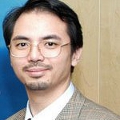Materia Medica - Important
Disclaimer
The information that is available at or
through this site is not intended directly
or by implication to either diagnose or
treat any medical, emotional, or
psychological condition or disorder. It
is always recommended that consultation
with local health care providers be
obtained for specific health or medical
concerns.
Pharmaceutical Name

Radix Pseudostellariae
Botanical Name

Pseudostellaria heterophylla (Miq.) Pax ex Pax et Hoffm.
Common Name

Pseudostellaria root
Source of Earliest Record

Zhongguo Yaoyong Zhiwu Zhi
Part Used & Method for Pharmaceutical Preparations

The tuberous roots of the cultivated pseudostellaris are dug in the period around the Great Heat (twelfth solar term). After the fibrous roots are removed, the roots are dried in the sun.
Properties & Taste

Sweet, slightly bitter and neutral
Meridians

Spleen and lung
Functions

To replenish qi and promote body fluids
Indications & Combinations

1. Deficiency of the spleen manifested as poor appetite and lassitude. Pseudostellaria root (Taizishen) is used with Dioscorea (Shanyao), Hyacinth bean (Biandou), Germinated millet (Guya) and Germinated barley (Maiya).
2. Deficient yin of the lungs manifested as dry cough or cough with scanty sputum. Pseudostellaria root (Taizishen) is used with Glehnia root (Shashen) and Ophiopogon root (Maidong).
3. Deficient yin of the stomach manifested as thirst. Pseudostellaria root (Taizishen) is used with Dendrobium (Shihu) and Trichosanthes root (Tianhuafen).
4. Deficiency of the spleen leading to deficiency of both qi and blood manifested as palpitations, insomnia and sweating. Pseudostellaria root (Taizishen) is used with Wild jujube seed (Suanzaoren) and Schisandra fruit (Wuweizi).
Dosage

10-30 g
Back
to Materia Medica
| 
 This website is published, edited and designed by Raymond Cheng,
and reflects only and only his personal views and opinions in his individual capacity.
The information available at this website is not intended
directly or by implication to either diagnose or treat any
medical, emotional, or psychological condition or disorder.
It is also not intended to create a physician-patient relationship
between you and I or between you and Wyith Institute™ and The Office of Dr Raymond K K Cheng.
The information here is not a substitute for advice and treatment provided
by your physician or by another healthcare professional.
It is always recommended that consultation with local healthcare providers
be obtained for any of your specific health or medical concerns.
Furthermore, any products that can be purchased (yet you can see I don't have much
to sell here) through advertisers' banners or through links to other websites
are not either explicitly or implicitly given any warranty or endorsement
by me, my colleagues, Wyith Institute™ or any of its associated businesses.
This website is published, edited and designed by Raymond Cheng,
and reflects only and only his personal views and opinions in his individual capacity.
The information available at this website is not intended
directly or by implication to either diagnose or treat any
medical, emotional, or psychological condition or disorder.
It is also not intended to create a physician-patient relationship
between you and I or between you and Wyith Institute™ and The Office of Dr Raymond K K Cheng.
The information here is not a substitute for advice and treatment provided
by your physician or by another healthcare professional.
It is always recommended that consultation with local healthcare providers
be obtained for any of your specific health or medical concerns.
Furthermore, any products that can be purchased (yet you can see I don't have much
to sell here) through advertisers' banners or through links to other websites
are not either explicitly or implicitly given any warranty or endorsement
by me, my colleagues, Wyith Institute™ or any of its associated businesses.



 Thank you for visiting this TCM and acupuncture information website.
If you have previously been to this website, you might have
noticed that some of the pages on ancient historical ideas and
holistic thinkings related to Chinese metaphysics are temporarily taken offline.
This is because I will be revamping the whole website and be moving
those information into a new \"Ancient Chinese Culture\" section
so as to reflect a more current perspective on the interpretation
of some of the fundamental concepts as well as to include
some of the latest information in the area.
But if you have just found this website for the very first time, I welcome you again and
wish you could find what you require and, hopefully, you could also be benefitted
from reading the articles I published on this website.
Thank you for visiting this TCM and acupuncture information website.
If you have previously been to this website, you might have
noticed that some of the pages on ancient historical ideas and
holistic thinkings related to Chinese metaphysics are temporarily taken offline.
This is because I will be revamping the whole website and be moving
those information into a new \"Ancient Chinese Culture\" section
so as to reflect a more current perspective on the interpretation
of some of the fundamental concepts as well as to include
some of the latest information in the area.
But if you have just found this website for the very first time, I welcome you again and
wish you could find what you require and, hopefully, you could also be benefitted
from reading the articles I published on this website.